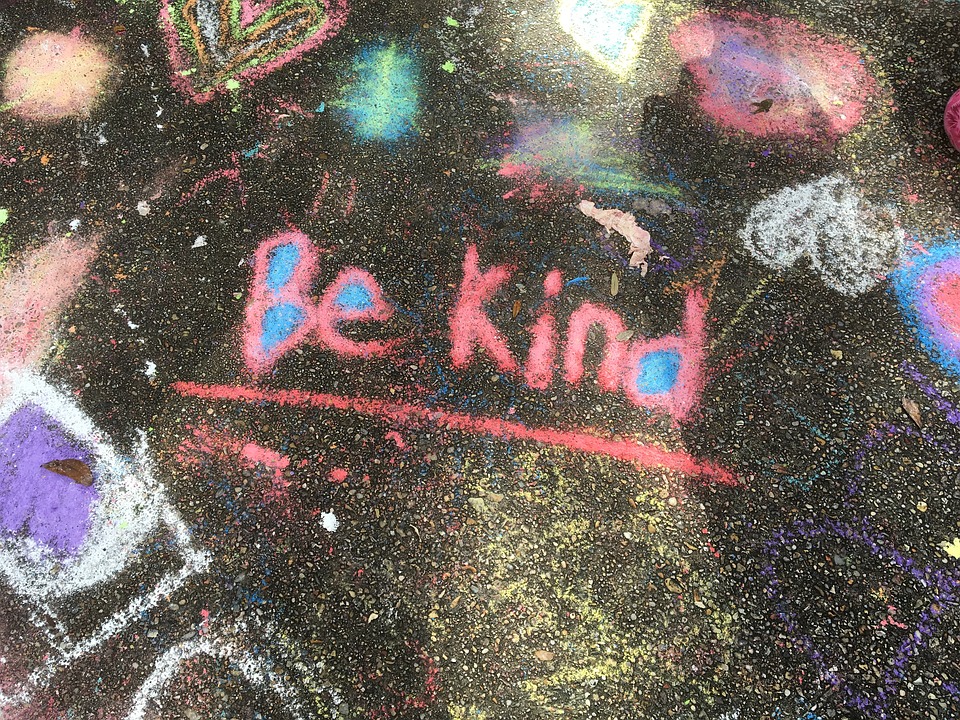Kindness: one key to success for college admission
May 14th, 2019Earlier this month, I toured several boarding schools on the east coast. The visits were great and I was particularly struck by the last school visited, where students displayed an uncommon degree of kindness and compassion. This was manifested in part by their warm descriptions of not only teachers, but staff members performing important but less prestigious work on campus. Students’ smiles were huge as they described these individuals’ roles in their lives and I left wondering why that isn’t the norm.
The admissions scandals are bringing up important conversations among parents, teachers and students. How can we improve the system so that we are considering the best fit for each individual instead of ignoring core values just to get into the most selective schools?
My trip sparked ideas about character development and made me think about the second “Turning the Tide” report released earlier this spring. Turning the Tide stems from the Making Caring Common campaign based at Harvard’s Graduate School of Education, focusing on character building in schools, at home, and during the admissions process. It is a great read for people of all ages and I hope it provokes thought about which values are really important to become a good citizen, which in turn will lead you on the right path through the college admissions process … and through life.
Article linked below from Making Caring Common Project, published in March 2019
Our new report calls on parents and high schools to put young people’s character and well-being at the center of a healthier, more sane college admissions process.
Three years in the making, Turning the Tide II: How Parents and High Schools Can Cultivate Ethical Character and Reduce Distress in The College Admissions Process, offers guidelines for high schools and parents in promoting ethical character. It also describes how Tsome high schools and colleges are working to promote greater ethical engagement among high school students, level the playing field for economically disadvantaged students, and reduce excessive achievement pressure. The report also includes a pioneering statement from admissions deans seeking to advance Turning the Tide’s goals.
Read more at Making Caring Common Project>>
Tagged: Applications, College, Community service, Opportunity, Personal characteristics, volunteer
Freshman Files: Taking some time away with a gap year
April 16th, 2019The “Gap Year” has been popular in Europe for a long time and is now on the rise in the United States. During a gap year, students explore their interests after graduating high school and before attending college to explore the world, sharpen their sense of purpose or develop a new focus for the future.
While this has not been the traditional route for students in the past, many colleges in the U.S. are now on board by providing programs to support such a plan. Colleges like Tufts University, Florida State University and University of North Carolina have added enriching international and domestic volunteer, fellowship and internship gap year programs. To read more about these schools and several others that now offer gap year programs, go to www.goabroad.com .
In today’s Freshman Files post, Eliana Shapere has written a beautiful description of her self-constructed gap year and what it has meant to her. I am delighted that she is willing to share her experience and think it is a great read for all parents and students as we all continue to consider which direction to go in life.
I have always been an autodidact. When I was four, I refused to participate in art class but spent all my time at home making sculptures out of tape and things from the recycling bin. School pretty much went the same; I taught myself French and got in trouble for drawing during class. What can I say? Like many creative kids, I was bored. I did the International Baccalaureate Program, which worked well with my learning style. There was a required research paper for each class, and ironically, this was the most freeing experience I had in high school. At the end of my junior year at Tates Creek, I decided to take a gap year to travel the world. It was the best decision I ever made.
I didn’t just decide to take a gap year and spend it travelling out of nowhere. My dad travelled through Europe and Asia in the middle of college, and afterwards switched majors from Math to Physics. His adventure stories filled me with a desire to see the world, and to go at it alone. I was also inspired by my great-grandfather who travelled for two years after college. He too came back from his voyages a changed man, and turned away from his conservative upbringing to devote himself to writing and progressive politics.
I knew that a relatively unstructured year would prepare me to give college my all. My teachers have been books, coworkers, bosses, museums, and strangers who became friends. To raise money for my travels, I interviewed faculty from the University of Kentucky College of Arts and Sciences, lifeguarded at Woodland Pool, and canvassed for Amy McGrath. I was pretty shy around strangers until I got a job talking to dozens of them each day about politics. I discovered that I enjoy creative writing more than journalism, and I have filled many notebooks these past months.
So far I have travelled alone to Cuba, Italy, Switzerland, France, and Spain. In Havana, I made friends with an artist who had a huge collection of Art Brut. By the way, I had never heard of Art Brut until meeting him, but now I love it. During school, I prioritized sports, music, and theater, but Cuba helped me remember how much I love drawing. In Florence, I learned enough Italian to survive, and then went to Sicily to eat cannoli and check out all the Greek ruins. I will never forget my first glimpse of the Temple of Concordia through fragrant almond trees. I am interested in Classics, so this was a dream come true.
There have been few drawbacks. A common fear (or so my mother tells me) is that people who take gap years are less likely to go on to college. All I can say is that somehow, my excitement about college decreased exponentially throughout high school. I never thought I would say this last May, but now I feel hopeful and excited about college. I have gained confidence about teaching myself, but I want to join a stable academic community, so I feel sure that college is the right path for me. Another fear is that taking a gap year turns kids lazy. Too much time makes idle minds, but I am grateful for the space to think. I am more creative than I was in high school, because I have free time. During high school, it was all too easy for me to ignore the “little” things like sleep and hanging out with friends. I don’t say this lightly: now, I have a clearer sense of what matters in life.
If you are in high school now, I wholeheartedly suggest that you take a gap year. You will grow in ways you cannot yet imagine. You will get a better idea of what you want to study. And yes, you will have time to think, relax, see your friends, and sleep. Consider if you prefer more or less structure, and let that dictate your year. Even if you’re sure you don’t want to take a gap year, brainstorm what you might do just as an exercise.
There are various scholarships for service, and you can find work nearly anywhere you want. Americans can work with no visa in Australia, and everywhere I’ve been, there have been volunteers working at the hostels in exchange for room and board. There’s WWOOFing (working on organic farms), workaway, and Helpx. I have been Couchsurfing to save money and live like a local. Couchsurfing is a network of people who open their homes to travellers, but it’s more than a free place to stay. It’s about exchanging stories, cooking for each other, and a shared hope for the future.
The possibilities are endless, and it’s never too early to consider a gap year. Now take some time to dream.
Tagged: College, Freshman files, Personal characteristics
Ring in the new year with kindness and communication
January 9th, 2019January presents an opportunity for a fresh start and with the new year we often try to make changes that will create a better future. College applicants are already considering how their new year will be different; graduating from high school, possibly moving away from home, and starting a new school will all come in 2019. What if I told you that being mindful of communication and kindness could help smooth these transitions?
In the article linked below, Forbes contributor Brennan Barnard has come up with ways to improve the college application process for everyone by adding communication and kindness. It seems so simple, and as he explains how it can help each aspect of the admissions process you will appreciate why it is so important. I hope this year brings you health, kindness and communication along with a great transition into this next phase of life.
Article referenced below published on January 1, 2019 by Forbes, written by Brennan Barnard
My family had a New Year’s tradition that was different than most, one that often led to tears and retribution between me and my brothers. At breakfast on January 1st every year, we gathered around pancakes, and instead of crafting our own New Year’s resolutions, the group would decide what each family member should commit to change or improve in the coming year. Having a spotlight on our shortcomings was no picnic, as you can imagine, but in retrospect, it was a valuable exercise.
College admission is an imperfect system. With each new year, it grows more complicated, and produces more anxiety and finger-pointing, for everyone involved. It’s easy enough to assign blame, but rarely are we willing to address our role. So, in the spirit of the Barnard family tradition, I want to suggest two simple New Year’s resolutions to all the constituents involved in college admission: communication and kindness. Imagine the ways that our culture could start to heal if we all stopped blaming each other, and instead of defaulting to extremes, embraced the ways we can contribute to a healthier global community. Whether you are a student, a parent, or a high school or college educator, this coming year I beg you to continually ask yourself, “what am I doing to be a better communicator and to be more kind?”
Read more at Forbes >>Tagged: Applications, College, Personal characteristics
Meet a new generation of doers
August 21st, 2018In today’s world, more and more youth use the power of their voice to make a difference and we are always happy to see these outstanding young people highlighted in the media. One way local Kentucky students are sharing their collective voice is through the Prichard Committee for Academic Excellence’s Student Voice Team. This organization gives students the opportunity to make a difference in Kentucky schools across the Commonwealth. And are they ever making an impact!
One small idea can have a huge impact as long as hard work and ambition go along with it. In today’s article from Family Circle we share 5 amazing teens who are making a difference in the lives of people around them. We hope this article inspires each of you to believe in your ideas and use your talents to make an impact in this world.
Article referenced below from Family Circle
Published by John Hanc
“Ready, set, pitch!” Seventy high school and college students come to life in a conference room at New York University. Facing them in an outer ring of chairs are adults—a cross-section of government officials, foundation board members and other deep-pocketed notables from the worlds of social service and philanthropy. They will soon vote and award three students $1,000 each to fund their projects.
This is “Speed Pitch,” the culmination of DoSomething.org’s Social Action Boot Camp, which aims to inspire, empower and celebrate young people who are passionate about community service. Throughout the daylong conference, students have shared and sharpened their ideas of social reform; this is their final opportunity to present them to people of power. Each teen came with a plan for a nonprofit project, like creating a cheerleading squad for special-needs students or crafting homemade gifts for children in local hospitals. As the students deliver their two-minute speeches, the experts listen and offer advice. When a facilitator calls, “Time’s up!” the teens move one seat over and start the pitching process again. Think of it as speed dating for social causes.
Read more at Family Circle >>
Tagged: College, High school, Personal characteristics, volunteer






